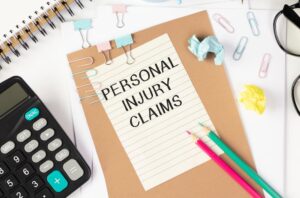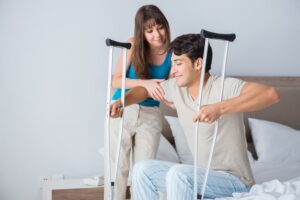The Austin Rodeo can be an enjoyable entertainment venue for locals and visitors. However, serious accidents and injuries may occur when individuals in charge of the rodeo and others behave carelessly and irresponsibly. Suppose you suffered injuries while at the Austin Rodeo; you may be entitled to recover compensation for your losses. A skilled Austin personal injury attorney can investigate the circumstances of the occurrence and take the necessary legal steps to recover the compensation you need.
How do Accidents at the Austin Rodeo Frequently Happen, and Who is at Fault?
Accidents at the Austin Rodeo often stem from various factors, primarily linked to individuals' negligence. One common scenario involves participants or event organizers failing to adhere to established safety protocols. Whether bull riding, barrel racing, or roping events, negligence in enforcing safety measures – such as proper equipment usage or secured barriers – can lead to accidents and injuries. Another prevalent cause of accidents at the Austin Rodeo is inadequate training or preparation. Participants not adequately trained in handling animals or navigating the challenging aspects of rodeo events are more prone to accidents. This lack of proficiency can result in injuries to both participants and spectators. Negligence in the maintenance of equipment and facilities is another contributing factor. Rodeo events heavily rely on specialized equipment, such as ropes, saddles, and gates. If these items are not properly maintained or inspected regularly, malfunctions can occur, leading to accidents during performances.Types of Injuries that Individuals May Suffer Due to Others' Negligence at the Austin Rodeo
Injuries resulting from negligence at the Austin Rodeo can encompass a range of types, affecting both participants and spectators.- One prevalent category is traumatic injuries sustained by participants during rodeo events. Improperly maintained equipment, inadequate training, or reckless behavior can lead to serious injuries such as fractures, concussions, and spinal cord injuries. These injuries may have long-lasting effects on the physical well-being of participants.
- Spectators are not immune to the potential harm caused by negligence at the rodeo, either. Inadequate crowd control measures or failure to enforce safety zones can lead to injuries among onlookers. Trampling incidents, falls, or being struck by equipment are examples of injuries that spectators may suffer due to the negligence of event organizers in ensuring a safe viewing environment.
- Animal-related injuries are another significant concern at the Austin Rodeo. Negligence in handling and treating rodeo animals can result in dangerous situations for participants and spectators. Bites, kicks, or trampling incidents involving animals can cause severe injuries, and negligence in ensuring the safety of animals and humans contributes to these risks.
- Moreover, negligence in enforcing safety guidelines may contribute to cuts, bruises, and abrasions.
Filing a Personal Injury Claim after the Austin Rodeo
Proving a personal injury claim arising from negligence at the Austin Rodeo involves building a strong case based on clear evidence and demonstrating the key elements required for a successful claim. The first crucial element is establishing the duty of care. In the rodeo context, this involves demonstrating that the party responsible for the injury owed a duty to provide a safe environment for participants and spectators alike. Next, establishing a breach of legal duty is necessary. This requires showing that the responsible party failed to uphold the standard of care expected in ensuring safety at the rodeo. This breach may involve inadequate crowd control measures, insufficient participant training, poorly maintained equipment, or neglect addressing potential weather-related hazards.
Causation is another critical aspect of successfully proving a personal injury claim. Connecting the negligence to the actual injuries sustained is essential. This involves demonstrating that the breach of duty directly led to the injuries and that, without the negligent actions, the injuries might not have occurred.
Accumulating strong evidence is fundamental to support a personal injury claim. This includes obtaining the official accident report filed by law enforcement, witness statements, medical records detailing the injuries sustained, and any available photographic or video evidence depicting the conditions leading to the incident. Such evidence helps to establish a compelling narrative of the events surrounding the injury.
Engaging expert witnesses, such as medical or safety professionals, can further strengthen the case. Professional testimony can provide insights into the extent of injuries, the standard of care expected at rodeo events, and whether the negligence directly caused the injuries sustained.
Documenting the full extent of damages is also crucial for a successful personal injury claim. This involves detailing medical expenses, lost earnings due to the injury, and any long-term effects on the victim's physical or mental well-being. A comprehensive overview of damages ensures that the compensation sought is fair and just.
Finally, navigating the legal process requires the experience of an experienced personal injury attorney. A skilled attorney can actively guide the injured party through the complexities of the legal system, negotiate with opposing parties, and, if necessary, actively represent them in court to ensure justice and fair compensation.
Next, establishing a breach of legal duty is necessary. This requires showing that the responsible party failed to uphold the standard of care expected in ensuring safety at the rodeo. This breach may involve inadequate crowd control measures, insufficient participant training, poorly maintained equipment, or neglect addressing potential weather-related hazards.
Causation is another critical aspect of successfully proving a personal injury claim. Connecting the negligence to the actual injuries sustained is essential. This involves demonstrating that the breach of duty directly led to the injuries and that, without the negligent actions, the injuries might not have occurred.
Accumulating strong evidence is fundamental to support a personal injury claim. This includes obtaining the official accident report filed by law enforcement, witness statements, medical records detailing the injuries sustained, and any available photographic or video evidence depicting the conditions leading to the incident. Such evidence helps to establish a compelling narrative of the events surrounding the injury.
Engaging expert witnesses, such as medical or safety professionals, can further strengthen the case. Professional testimony can provide insights into the extent of injuries, the standard of care expected at rodeo events, and whether the negligence directly caused the injuries sustained.
Documenting the full extent of damages is also crucial for a successful personal injury claim. This involves detailing medical expenses, lost earnings due to the injury, and any long-term effects on the victim's physical or mental well-being. A comprehensive overview of damages ensures that the compensation sought is fair and just.
Finally, navigating the legal process requires the experience of an experienced personal injury attorney. A skilled attorney can actively guide the injured party through the complexities of the legal system, negotiate with opposing parties, and, if necessary, actively represent them in court to ensure justice and fair compensation.
Settling or Litigating a Claim Arising from Injuries at the Austin Rodeo
Settling or litigating a claim arising from injuries due to someone else's negligence at the Austin Rodeo involves a strategic approach. The first step is communicating openly with the party at fault or their legal representatives. Initiating dialogue to understand their perspective, sharing the details of the incident, and presenting evidence of negligence lays the groundwork for potential settlement discussions. Seeking a fair settlement also involves determining the extent of damages suffered. This includes evaluating medical expenses, lost earnings, and the overall effect of the injuries on the victim's life. Gathering thorough documentation, such as medical records, bills, and evidence of financial losses, strengthens the case for fair compensation. Engaging in settlement negotiations is another critical phase of the process. Effective communication with the responsible party or insurer involves presenting a compelling case for the damages incurred and advocating for a fair resolution. Negotiating a settlement requires flexibility, persistence, and a clear understanding of the strengths and weaknesses of the case. If parties cannot settle, the next step is actively pursuing litigation in the state court system. Initiating legal proceedings first involves filing a complaint against the responsible party. This complaint outlines the details of the incident, the negligence involved, and the damages sought. The complaint officially notifies the at-fault party of the legal action and begins the formal litigation process. Discovery is a key component of litigation. During this process, both parties exchange information relevant to the case, including documents, witness statements, and professional opinions. This phase allows each side to understand the strengths and weaknesses of the opposing case, facilitating a more informed approach to litigation. Engaging in mediation or alternative dispute resolution (ADR) can effectively resolve the dispute without going to trial. Mediation involves a neutral third party facilitating discussions between the parties to settle. ADR methods allow for a more collaborative – and less adversarial – case resolution. If settlement or ADR is unsuccessful, the case proceeds to trial. Presenting the evidence, witness testimonies, and legal arguments in court is tedious. The judge or jury then evaluates the case's merits and determines liability and damages. Ultimately, whether settling or litigating, having experienced legal representation is crucial. An attorney with experience in personal injury law and knowledge of the intricacies of rodeo-related incidents can navigate the legal process for you, advocate for your rights, and pursue the best possible outcome in your case.Recovering Damages for Injuries at the Austin Rodeo
Accident victims at the Austin Rodeo who have suffered due to someone else's negligence may be entitled to damages. One significant category is compensatory damages, which aim to reimburse the victim for their financial losses. This includes medical expenses, covering costs such as hospital bills, surgeries, medications, and ongoing treatments necessitated by the injuries they sustained. Lost earnings represent another component of compensatory damages. Victims who cannot work due to the injuries suffered at the rodeo may seek compensation for the income they lost during their recovery time. This ensures that individuals do not face additional financial complications while recuperating from their accident-related injuries.
Beyond the immediate financial losses, compensatory damages also extend to non-economic losses. Pain and suffering compensation addresses the physical and emotional distress resulting from the accident. This includes the immediate pain from injuries, as well as the long-term effect on the victim's overall well-being, including anxiety, depression, and other emotional challenges they may face.
Compensation for inconvenience recognizes the various disruptions resulting from the injuries. This can encompass challenges in daily routines, commuting, and attending to personal matters that become more cumbersome due to the accident.
Loss of consortium is a form of compensation that acknowledges the effect of the victim's injuries on personal relationships. For example, spouses may experience a reduced quality of companionship and intimacy due to the victim's physical or emotional limitations.
In some cases, punitive damages may be available. Unlike compensatory damages, punitive damages do not intend to reimburse the victim but rather actively aim to punish the at-fault party for particularly egregious negligence. In essence, punitive damages serve as a deterrent, discouraging similar wrongful behavior by others in the future.
Additionally, victims may seek compensation for future damages. This includes anticipated medical costs, ongoing rehabilitation, and future lost earnings if the injuries result in a long-term effect on the victim's ability to work.
The types of monetary damages available to accident victims at the Austin Rodeo encompass compensatory damages for immediate financial losses, pain and suffering, inconvenience, and loss of consortium. Punitive damages may be available to punish egregious negligence, and compensation for future damages addresses ongoing medical expenses, rehabilitation, and potential future financial losses.
An experienced personal injury lawyer can determine damages you may be eligible to recover and estimate your claim's likely settlement or verdict value.
Lost earnings represent another component of compensatory damages. Victims who cannot work due to the injuries suffered at the rodeo may seek compensation for the income they lost during their recovery time. This ensures that individuals do not face additional financial complications while recuperating from their accident-related injuries.
Beyond the immediate financial losses, compensatory damages also extend to non-economic losses. Pain and suffering compensation addresses the physical and emotional distress resulting from the accident. This includes the immediate pain from injuries, as well as the long-term effect on the victim's overall well-being, including anxiety, depression, and other emotional challenges they may face.
Compensation for inconvenience recognizes the various disruptions resulting from the injuries. This can encompass challenges in daily routines, commuting, and attending to personal matters that become more cumbersome due to the accident.
Loss of consortium is a form of compensation that acknowledges the effect of the victim's injuries on personal relationships. For example, spouses may experience a reduced quality of companionship and intimacy due to the victim's physical or emotional limitations.
In some cases, punitive damages may be available. Unlike compensatory damages, punitive damages do not intend to reimburse the victim but rather actively aim to punish the at-fault party for particularly egregious negligence. In essence, punitive damages serve as a deterrent, discouraging similar wrongful behavior by others in the future.
Additionally, victims may seek compensation for future damages. This includes anticipated medical costs, ongoing rehabilitation, and future lost earnings if the injuries result in a long-term effect on the victim's ability to work.
The types of monetary damages available to accident victims at the Austin Rodeo encompass compensatory damages for immediate financial losses, pain and suffering, inconvenience, and loss of consortium. Punitive damages may be available to punish egregious negligence, and compensation for future damages addresses ongoing medical expenses, rehabilitation, and potential future financial losses.
An experienced personal injury lawyer can determine damages you may be eligible to recover and estimate your claim's likely settlement or verdict value.
Call an Experienced Austin Personal Injury Lawyer Today

